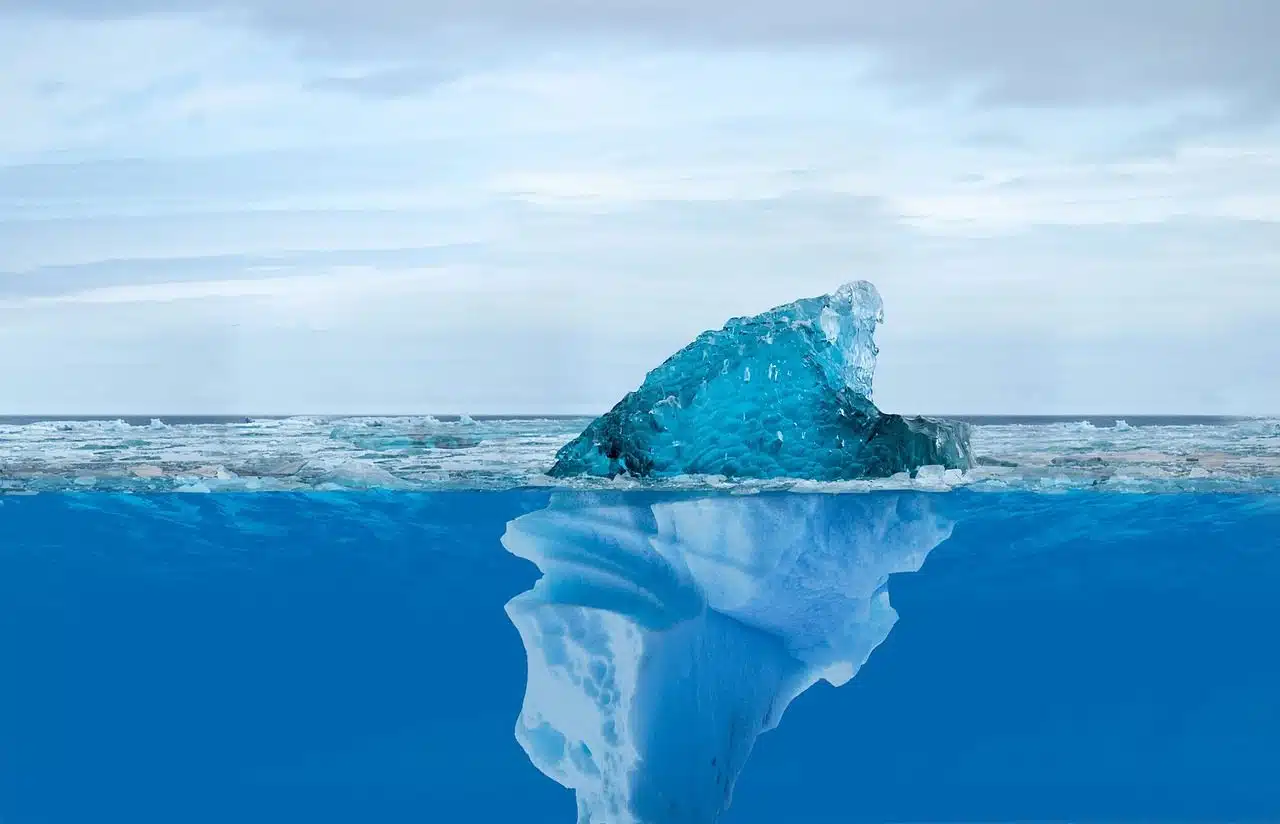
It is estimated that only one eighth of an iceberg's total volume protrudes, while the rest remains submerged.
Iceberg is a word that comes from the English language, although its origin dates back to the Germanic concept ijsberg . It is a large mass of floating ice , broken off from a glacier or an ice shelf, whose upper part protrudes from the surface of the sea.
Glaciers are masses of ice that originate on the Earth's surface due to the compaction and recrystallization of snow. Icebergs, for their part, are large masses of fresh ice, which are usually dragged by sea currents. Generally, only one eighth of its total volume protrudes , while the rest is submerged. This characteristic makes icebergs a great danger to navigation.
Characteristics of an iceberg
The existence of icebergs is possible since water has a lower density as it is in a solid state than in a liquid state. Therefore, ice can float on the surface and does not sink to the ocean floor.
Ice also has the peculiarity of being crystalline due to the electrical polarization of water molecules ( H2O ). The oxygen atom exerts a greater attraction to electrons than the hydrogen atoms. In this way, ice has a lower density than that of amorphous solids.

Icebergs break off from glaciers.
How they are formed
There are many theories about how iceberg formation takes place . Many people consider that it is due to a phenomenon that escapes what has been known to man until now, as if within the earth there was an immense spring that connects with the surface in the Antarctic territory and allows the formation of these blocks of ice; However, this theory has not been widely disseminated and its authors Reed and Gardner are not very popular.
The most accepted scientific explanation on this topic is the one that attributes this phenomenon to the calving of glaciers . During the summer period, the ice on these immense walls weakens and huge pieces fall into the ocean where they begin to move using the current and winds to open spaces.
If the iceberg reaches warm waters along the way, it melts; However, many of them end up anchored in Antarctic things and can remain for years or decades in that place .
The danger of icebergs
These plates floating in the ocean pose a serious danger to boats, because when a large percentage of the upper part of them has already been worn away by the effect of the sun and the winds , and only a faint iceberg can be seen floating on the surface , there is still a large chunk of iceberg underwater that may be enough to cause a ship to break down or capsize.
Nowadays there are many tools available to sailors to detect these icebergs and wade through them, but in ancient times they were responsible for a large percentage of shipwrecks.
The Titanic case
Many cases of accidents of this type are known. The most famous is the one suffered by the ocean liner known as Titanic in 1912 .
This ship left Southampton on April 10 bound for the United States , however it never arrived in this country. Five days after its departure, it collided with a gigantic iceberg and sank into the ocean . It was located about 600 km from Newfoundland , an area very suitable for iceberg sightings. The crash caused several hull plates to open, allowing water to enter the containment holes and therefore the front of the boat began to submerge, while the stern rose.
The passengers who could not be rescued died of hypothermia when they fell into the cold continental waters . In total, 1,500 people died, out of 2,210 who had boarded the Titanic . Of the 710 survivors, most of them were women and children, because the rescue protocol required that they be the first to board the lifeboats.
